As we approach the start of 2018 I have been wondering about the successes educators have had with global 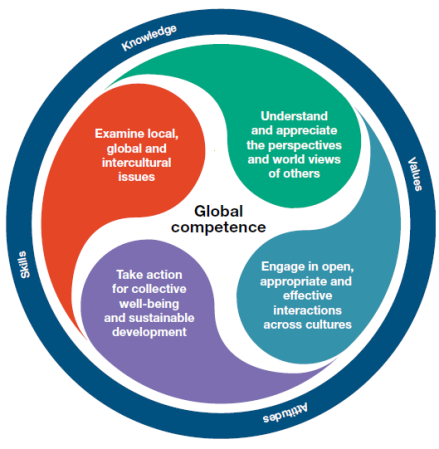 education programs, competencies, and citizenship. A major reason that I have been thinking about the visibility of global education is from watching the Harvard Graduate School of Education event “Preparing Our Youth for a Better World: OECD PISA Global Competence Framework Launch”
education programs, competencies, and citizenship. A major reason that I have been thinking about the visibility of global education is from watching the Harvard Graduate School of Education event “Preparing Our Youth for a Better World: OECD PISA Global Competence Framework Launch”
The two plus hour event focuses on the introduction of global competence to the PISA test. (see image of that model below). Overall the event was very informative and inspiring. But there is a specific message at the conference that I rewatched a few times starting at the 7:45 minute mark and going to about minute 42. Main takeaways from this segment are:
- Collectively we have not done a good job convincing others of the need for global education
- Global Education is not central to curriculum design
- Success is in part being able to work with diverse people instead of being threatened by them
- Measuring, quantifying, making things visible are a foundation for change
- It is hard to make global competency tangible… once they are visible, you can start to have a disucssion
The simple message is a key reminder and call to action. Visibility! This harkens to two projects that have impacted my thinking on education. Neither are directly related to global education models. However, both emphasize the importance of agency as a core value for success. Agency, to clarify is held by both teachers and students.
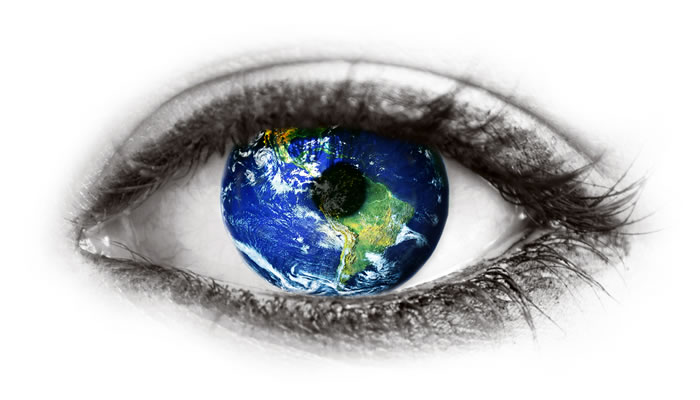 1) Visible Learning: John Hattie’s acclaimed work on what works for effective teaching and learning. “Visible Learning means an enhanced role for teachers as they become evaluators of their own teaching. Visible Teaching and Learning occurs when teachers see learning through the eyes of students and help them become their own teachers.
1) Visible Learning: John Hattie’s acclaimed work on what works for effective teaching and learning. “Visible Learning means an enhanced role for teachers as they become evaluators of their own teaching. Visible Teaching and Learning occurs when teachers see learning through the eyes of students and help them become their own teachers.
2) Making Thinking Visible: “Visible Thinking is a research-based approach to teaching thinking, begun at Harvard’s Project Zero, that develops students’ thinking dispositions, while at the same time deepening their understanding of the topics they study.” At the core of this practice is a collection of thinking routines and dispositions which promote student engagement and critical thinking. This EL article summarizes the movement very well.
Too often, however, the story of a school’s practices and programs concerning global education is limited to the work of a single or small  group of teachers. Indeed, these are important and valuable changes which (a) prepares students for the future and (b) frames K-12 education as part of the vanguard of profession as opposed to a one defined by lag. Moreover, these teachers are in a position to be leaders as their school adopts a broader systemic pivot towards global education.
group of teachers. Indeed, these are important and valuable changes which (a) prepares students for the future and (b) frames K-12 education as part of the vanguard of profession as opposed to a one defined by lag. Moreover, these teachers are in a position to be leaders as their school adopts a broader systemic pivot towards global education.
As I write this I am thinking of a sentiment my school district promotes, “It will never be a perfect time for change.” Indeed, delaying a shift to global education is embracing lag and complacency as part of an organizational vision. Instead, making global education part of a school’s mission and practice is part of the demands of globalization and the contemporary landscape. If not now, when?
Take a look at this short clip that collects the views of “independent school professional” regarding measuring success in global education. As you do keep in mind this question, “How visible do you think global education is in their schools?
Full disclosure, I wanted more. Save for a few anecdotes, I felt too little conviction and intent about global education being visible in their settings. We can do more. Schools, all types of them, do currently do more. To connect to how this post started, here are the categories PISA will be assessing through open ended prompts and scenarios not multiple choice questions:
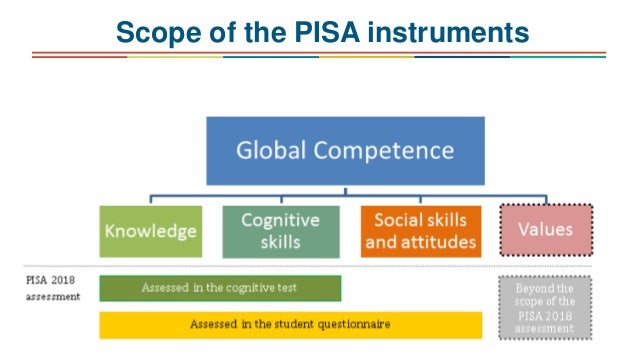
So, how to make the shift? How does global education become visible in schools? The good news is that moving towards making global education visible can be accomplished in any one or more of these areas:

- Assessment
- Environment
- Professional Learning
- Instruction
- Curriculum
I want to stress that the imperative for schools to provide experiences in teaching and learning that prepare students for the globalized world they will enter is both a moral and professional one. When educators choose to ignore or not go this route indeed raises an eyebrow. I am always curious to know why educators choose not to do so. I haven’t found a reason valid or convincing enough to include here.
As 2018 begins it is time to take stock of global education in your school. Where is global education visible in your school? Where can the focus become sharper? How do you move a school towards one that prepares students for a globalized reality? Who/what are the boundaries?
To start to answer these questions, I suggest these two resources and I encourage you to consider using with your community as a self-assessment and beginning plan for change:
- ASCD Globally Competent Learning Continuum: an online self-reflection tool to help educators of all grade levels and content areas develop globally competent teaching practices. The GCLC provides 12 concrete globally competent teaching elements with descriptions of what each looks like at different levels of development.
- Primary Source, Building Global Schools Toolkit: Drawing on decades of experience conducting global and multicultural professional development for educators, as well as input from teachers and administrators across the country, Primary Source developed these two guides:

a) ELEMENTS of a GLOBAL SCHOOL
b) STEPS for GLOBALIZING your SCHOOL
I will end with a question, a challenge, and some additional resources to explore after the two above. Have a wonderful new year and enjoy!
- QUESTION: What is your school/district’s story regarding preparing students for a global world?
- CHALLENGE: Make global education visible in your school… today. Make 2018 the year, January the month.
- ADDITIONAL RESOURCES:
Global Illinois Scholar Certificate: Wow. What these teachers did is an inspiration… “In order to best prepare Illinois students for career and citizenship, they must learn to navigate and achieve in an increasingly competitive and globalized world. ”
Signature Pedagogies in Global Education: In this study, we examine how exemplary teachers design signature learning experiences based on their understanding of (a) the world and why certain topics matter over others; (b) their disciplines and their standards in global terms; (c) the specific learning challenges that students confront when learning about the world; and (d) effective pedagogy.
Fulbright Teachers for Global Classrooms Program: This is a year-long professional development opportunity for U.S. elementary, middle, and high school teachers to develop skills for preparing students for a competitive global economy. Fulbright TGC equips teachers to bring an international perspective to their schools through targeted training, experience abroad, and global collaboration. Apply for the 2018-2019 cohort here.
World Savvy Classrooms and GCC: The Classrooms program integrates the highest level of global competence learning into classrooms by combining professional development and consulting for educators with project-based learning for K-12 students. The Global Competency Certificate (GCC) is the first-of-its-kind, graduate-level certificate program in global competence education for teachers.
Generation Global: Video conferences immerse students in an entirely new experience. We connect classrooms across the world, allowing students to explore, articulate, and develop their own views, while encountering and considering the views of others. It is a safe space, with a trained facilitator to manage the flow of the discussion.
ISTE Global PLN: The Global Collaboration Network offers best-practice curriculum design to embed global learning experiences into everyday teaching. The community shares tools and methods, curriculum developments, and opportunities for collaborations.@ISTEglobalPLN
iEARN: Since 1988, iEARN has pioneered on-line school linkages to enable students to engage in meaningful educational projects with peers in their countries and around the world. Join interactive curriculum-based groups where students are creating, researching, sharing opinions and becoming global citizens.
Asia Society, Center for Global Education: The Center for Global Education at Asia Society has a vision that, in an interconnected global era, all youth from all countries and cultures will have the capacity to create, participate in, and benefit from a peaceful and prosperous world. These outcome tools and rubrics are invaluable.


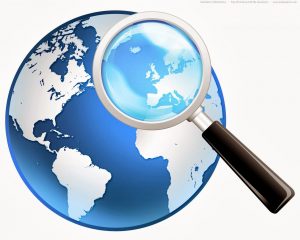


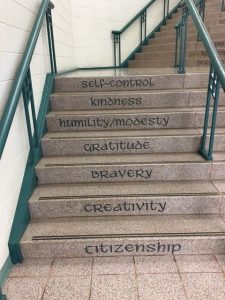
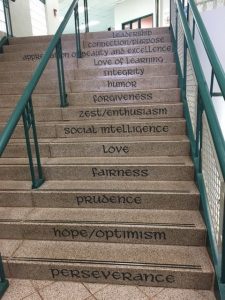
 try this with my non-AP students.”
try this with my non-AP students.” before becoming an editor in language-arts publishing. During many summers when I was growing up in Massachusetts, my family enjoyed hosting exchange students from all over the world. Those experiences motivated me to study and work abroad. After graduating college, I spent two years on the
before becoming an editor in language-arts publishing. During many summers when I was growing up in Massachusetts, my family enjoyed hosting exchange students from all over the world. Those experiences motivated me to study and work abroad. After graduating college, I spent two years on the 
 support of Academic WorldQuest and WACA’s
support of Academic WorldQuest and WACA’s 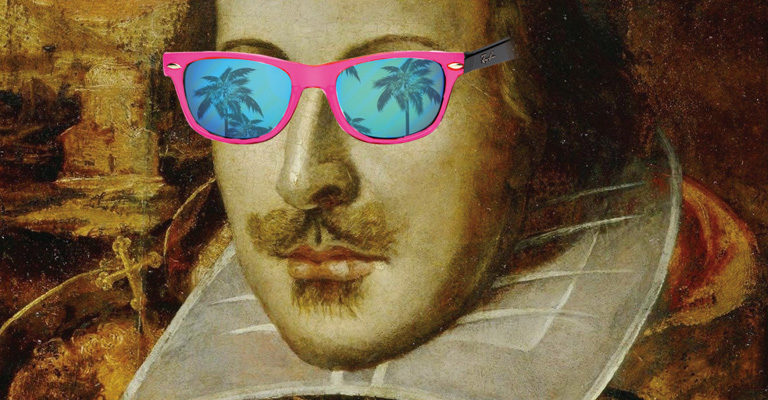

 not an R and D profession. In short, educators don’t wait for research before they implement the next best thing. The result include the continuation of Edu-Myths. Enter Digital Promise and their
not an R and D profession. In short, educators don’t wait for research before they implement the next best thing. The result include the continuation of Edu-Myths. Enter Digital Promise and their  has done it again. This latest work is a wonderful compilation of lessons across grades and content areas that teachers can use/modify in order to implement global citizenship education.
has done it again. This latest work is a wonderful compilation of lessons across grades and content areas that teachers can use/modify in order to implement global citizenship education.




 line, the question of how far differences of race-which show themselves chiefly in the color of skin and the texture of the hair-will hereafter be made the basis of denying to over half the world the right of sharing to their utmost ability the opportunities and privileges of modern civilization.” The problem clearly continues in the 21st century in varying forms – structures of power, ignorance, hate, identity politics etc. Thankfully race has not gone unnoticed on the global stage.
line, the question of how far differences of race-which show themselves chiefly in the color of skin and the texture of the hair-will hereafter be made the basis of denying to over half the world the right of sharing to their utmost ability the opportunities and privileges of modern civilization.” The problem clearly continues in the 21st century in varying forms – structures of power, ignorance, hate, identity politics etc. Thankfully race has not gone unnoticed on the global stage.
 State Department. The TGC program is an outstanding professional growth opportunity for educators. The program overview and application for the next cohort (deadline in March 20th)
State Department. The TGC program is an outstanding professional growth opportunity for educators. The program overview and application for the next cohort (deadline in March 20th) 
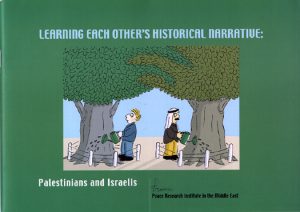
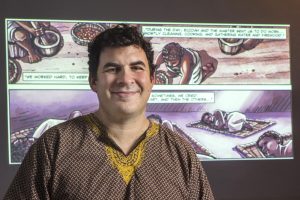







 experience of 1970s, 1980s, 1990s etc? This would imply t hat students are being taught for 20th century goals with 20th century methods and beliefs. If so, that is an an eyebrow raiser indeed.
experience of 1970s, 1980s, 1990s etc? This would imply t hat students are being taught for 20th century goals with 20th century methods and beliefs. If so, that is an an eyebrow raiser indeed. mutually exclusive). Utilizing any of them with your classes explicitly and intentionally
mutually exclusive). Utilizing any of them with your classes explicitly and intentionally 